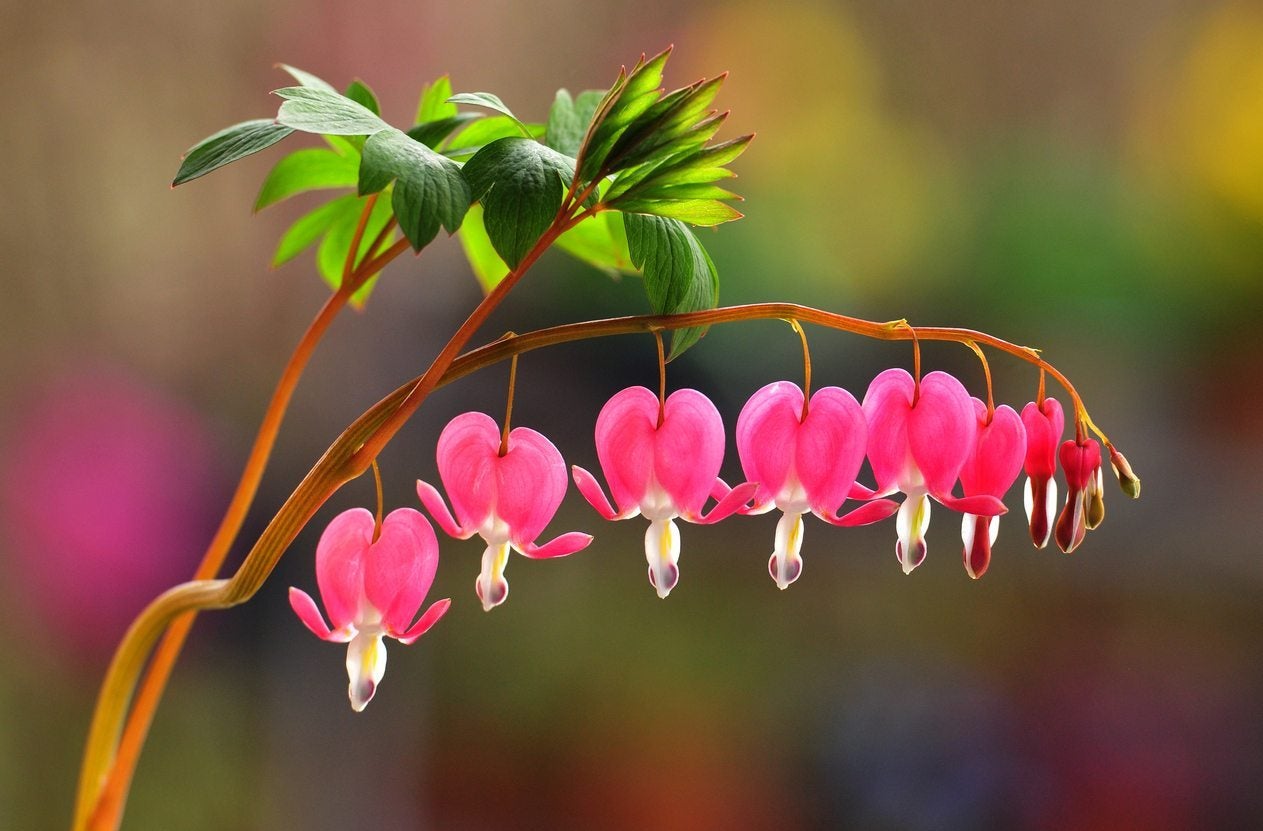Propagating Bleeding Hearts : How To Grow More Bleeding Hearts


Few plants match the old-fashioned charm and romantic blossoms of bleeding hearts. These whimsical plants appear during spring in shady to partially sunny locations. As perennials they come back year after year but how to propagate bleeding heart plants? Bleeding heart propagation is easy through seed, cuttings, or division. Cuttings and division will give plants truer to the parent plant and a quicker bloom time. These are simple ways to grow more bleeding hearts to share with friends and family.
When to Propagate a Bleeding Heart
With its lacy, fern-like foliage and pillowy, heart-shaped flowers, bleeding heart is one of the champions of the low light landscape. The plants will bloom for years but often flowers slow down as the plant gets older. This is when to propagate a bleeding heart by division. Such activity will rejuvenate the plant while also allowing you to grow more. Division can occur either in fall or in early spring. If dividing in fall, wait until the foliage has died back. You may also choose to propagate the plants with seed but results will be variable and the process much slower. The best time to plant seeds is in late summer. The seeds need a period of cold exposure to break dormancy and release the embryo. You may also choose to plant the seeds in pots and take them indoors, but they will still need several weeks in the freezer before they will germinate. Some species of bleeding heart will self-sow, so be on the lookout under the parent plant for babies. These can be transplanted once they have two sets of true leaves into a prepared garden bed in partial to full shade. Cuttings should be taken while the plant is actively growing but after it has flowered.
Propagating Bleeding Hearts from Seed
Bleeding heart propagation from seed is fairly straightforward. Lightly pre-moisten the soil in which the seeds will grow. A good potting mixture with plenty of peat and vermiculite will be perfect. You may also sow directly into a prepared garden bed. Plant seeds half as deep as the seed's width. Cover with soil. For indoor seeds in pots, wrap the pots in plastic wrap and put the containers in the freezer for up to 6 weeks, then place containers in a warm location to germinate. Germination usually takes place in a month. Outdoor seeds will not germinate until soil and ambient temperatures warm in spring. Transplant seedlings gently and keep moderately moist until they establish.
How to Propagate Bleeding Heart Plants with Cuttings or Division
Another method of propagating bleeding hearts is through vegetative means. Bleeding hearts react well to division and, in fact, grow much better if divided every 5 years or so. Dig up the plant carefully and use a sharp, clean soil saw to cut the plant in half or thirds. Each portion should be planted in loose soil or in containers and kept moderately moist. For cuttings, you may take a portion of a root. Before taking root cuttings, water the plant thoroughly the night before. Excavate carefully to find a good, healthy thick root. Rinse the root clean and look for growth nodes. Take a section of the root that includes at least two nodes. Lay the cutting on pre-moistened horticultural sand and cover it with an inch (2.5 cm.) more of the material. Keep the cutting moist in low light. Usually, in 4 to 6 weeks you can expect some sprouting.
Sign up for the Gardening Know How newsletter today and receive a free copy of our e-book "How to Grow Delicious Tomatoes".

Bonnie Grant is a professional landscaper with a Certification in Urban Gardening. She has been gardening and writing for 15 years. A former professional chef, she has a passion for edible landscaping.